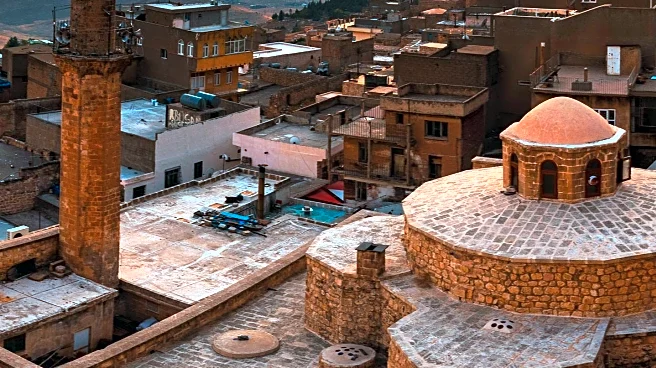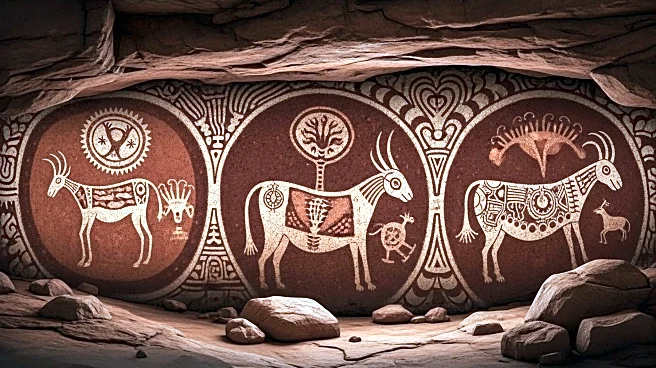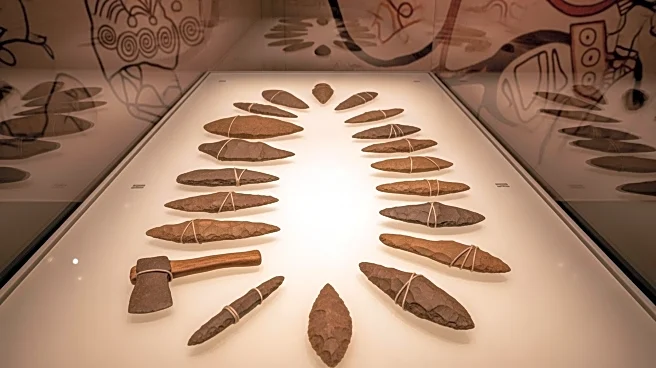What's Happening?
A 12,000-year-old human-shaped statue has been discovered embedded in a wall at Göbekli Tepe, the world's oldest known temple complex in southeastern Turkey. The statue, found during restoration work, retains its head and torso but is missing its feet. This discovery provides new insights into the spiritual and ceremonial practices of early human communities. The statue's placement suggests it may have served a symbolic or ritualistic purpose, possibly as a guardian figure or votive offering.
Why It's Important?
The discovery at Göbekli Tepe is significant as it adds to the understanding of Neolithic rituals and the symbolic world of early human societies. Göbekli Tepe, a UNESCO World Heritage site, continues to reshape scholarly understanding of early human civilization, highlighting the complexity and sophistication of pre-agricultural societies. The find underscores the importance of Göbekli Tepe as a ceremonial site, offering insights into the spiritual beliefs and practices of some of the world's earliest settled communities.
What's Next?
Ongoing excavation and conservation efforts at Göbekli Tepe are expected to continue, with international collaboration to preserve and study the site. The discovery may lead to further archaeological investigations to uncover more about the site's history and significance. Additionally, Turkey plans to enhance visitor facilities to accommodate growing interest in the site, balancing tourism with preservation efforts. The findings may also be featured in global exhibitions, promoting Göbekli Tepe as a shared heritage of humanity.











